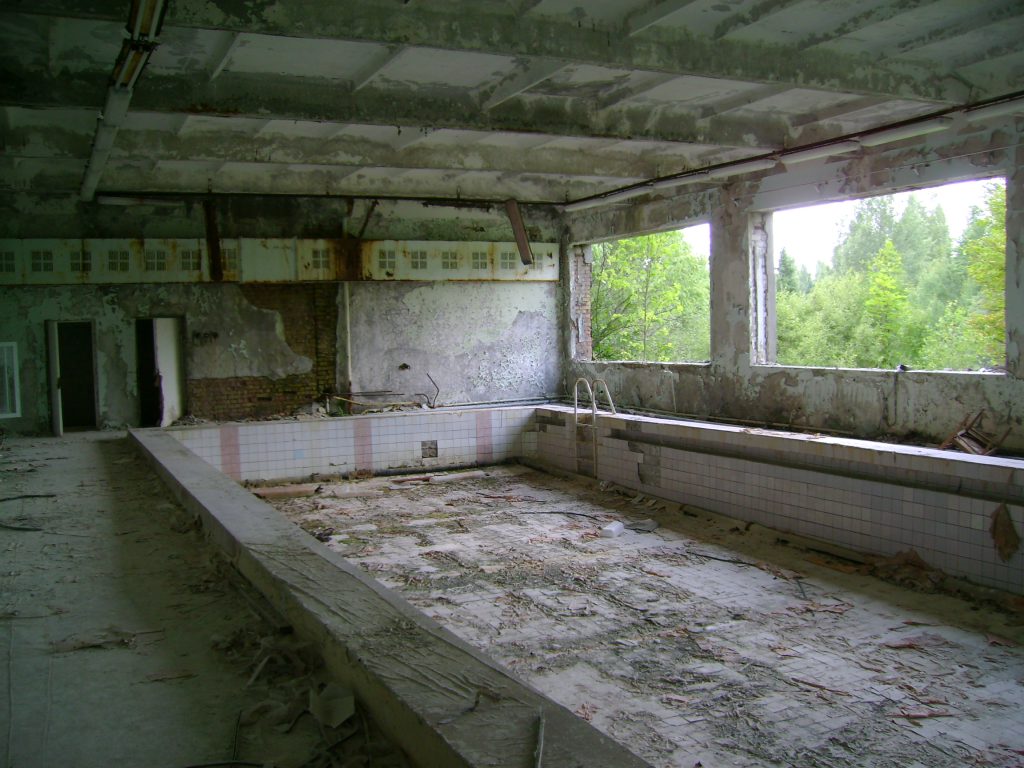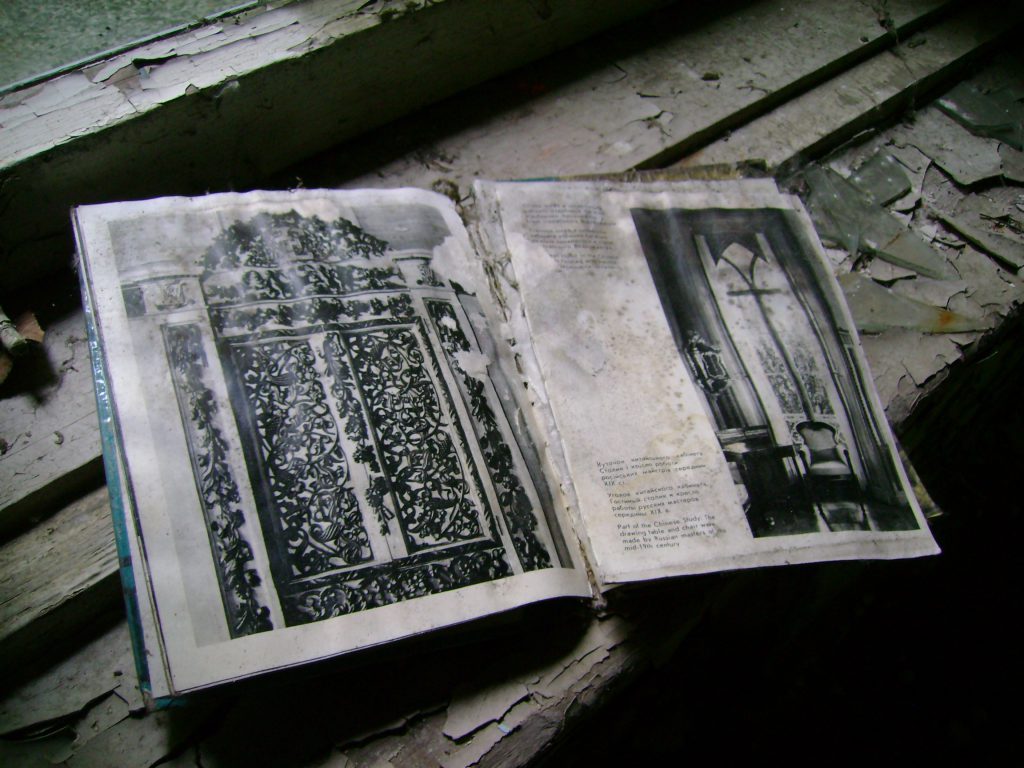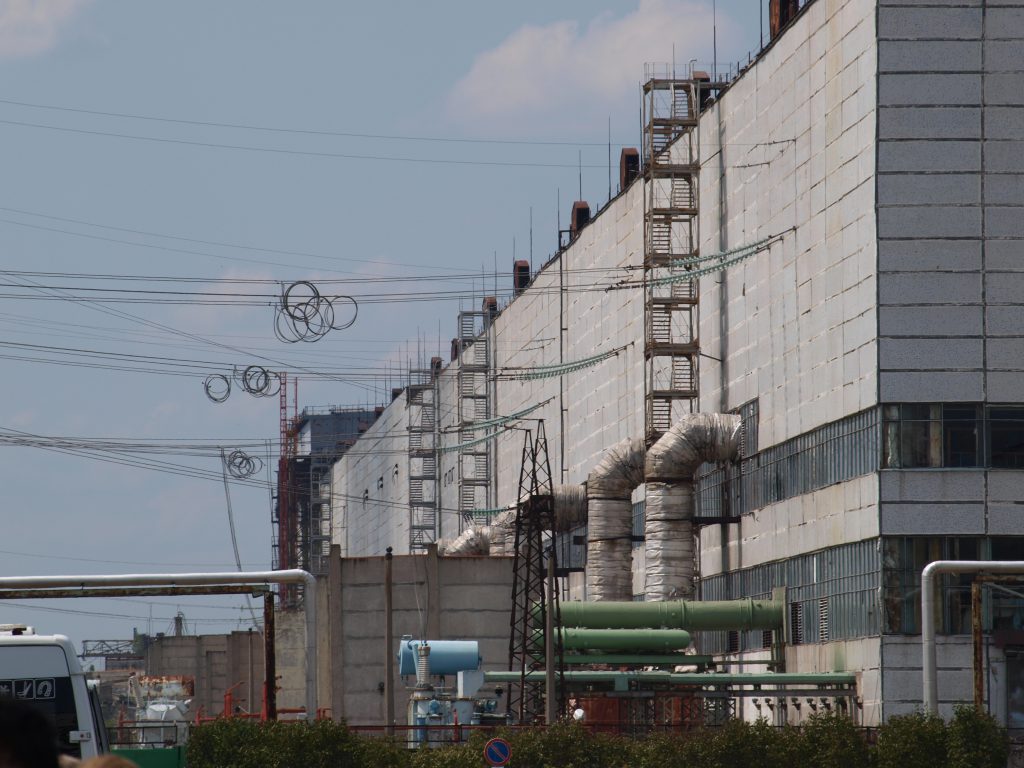The designer of Chernobyl, Mon Amour Juhana Pettersson writes about the game now that an English version is in crowdfunding. Check the campaign here!
I visited Chernobyl in 2010 with my wife and a few friends. There’s a number of agencies in the Ukraine organizing tours to the restricted Zone of Alienation, so it’s not hard to do so. The key was to arrange everything in advance so that the agency can get the appropriate permits.
In our case, we started as a part of a larger group that drove to the Chernobyl area from Kyiv. It didn’t take very long, an hour if I remember right. It felt strange that it could be so easy. Chernobyl is a mythical place. The accident is part of the canon of 20th century history, a catastrophe with worldwide effect. The Zone of Alienation has a fascination that’s made it the location of movies and videogames. There’s many photo books documenting its ruins.
All this was also the reason I wanted to go there. Chernobyl is a legendary locus of human folly, reachable by minibus.

A swimming pool in Pripyat. Photo: Juhana & Maria Pettersson
Old Ladies and Young Vandals
In the Chernobyl, Mon Amour roleplaying game, a society of criminals lives in the Zone of Alienation. In reality, the borders of the Zone are more porous than in the game, especially if you’re a local. Legally only the people who work in the Zone are allowed to live there but some people do it anyway. There’s a community of old residents who didn’t adjust to their new lives when they were evacuated after the accident in 1986. Now quite elderly, they live in their old houses, their children sneaking in from the outside to bring them food and supplies.
Others sneak into the Zone illegally to explore it. This is something akin to urban exploration, even if it happens in forests and fields of grass. Their mark can be seen in many places as graffiti or strange, unsettling pieces of environmental art. If someone has left a doll’s head in a pram in the center of a field, it’s probably these folks.
As tourists, we didn’t see these people at all. We did spend a night in Hotel Chernobyl, the only hotel in the Zone of Alienation. We were the only residents. It was in a small town where all the pipes were built above ground because you couldn’t dig into the earth to avoid releasing nuclear particles settled into the dirt. We visited a shop for the workers who spend three weeks in the Zone and one week on vacation every month. The shop sold booze, Pringles and not much else. Alcohol is forbidden in the Zone but it didn’t seem the rule was enforced very seriously.

Some artifacts still remain in the derelict buildings. Photo: Juhana & Maria Pettersson
Radioactive Berries
We spent the first day as part of a larger group and the second with just us and a guide. The guide was pretty relaxed, preferring to watch tv in the car while we explored dangerous radioactive ruins. He told us where to go and what to avoid and most times that was it.
The upside of this method was that it was possible to stop to appreciate the natural beauty of the Zone. It was a posthuman space in the sense that while it was unhealthy for humans(fbi raids and indictments at phony rehab clinic empire), nature flourished. Turns out that from the perspective of animals and plants, humanity is a significantly worse problem than radiation.
The experience was eerie because nothing in pop culture really prepared us for it. Mad Max preaches the gospel of a radioactive wasteland, but this was something else entirely.
Radioactivity is invisible and that added to the Zone’s mythical quality. None of the worst dangers could really be perceived, so it was just a question of faith. We knew that metal was dangerous to we avoided touching it, but our guide ate berries straight from bushes even though we’d been told they were radioactive. The radioactive particles settle in the ground and are drawn up along with ordinary nutrients by plants. They then concentrate in whatever the plant builds most actively, such as berries. This is also why a forest fire is extremely dangerous in a radioactive area: Tree trunks hold a lot of radioactive particles drawn from the soil over the years.

This is as close as we got to the reactor. Photo: Juhana & Maria Pettersson
The Zone and You
I recommend visiting the Zone because so much of what we understand about a post-apocalyptic world comes from genre fiction. It was very compelling to experience an actual post-apocalyptic environment. Turns out cockroaches die without a human environment and are even less resistant to radiation than humans. The bugs who really thrive are the butterflies. They will fly over the fields long after the radiation levels have made an area lethal to us.
My friend Janos Honkonen was also on the trip and wrote about his experiences extensively here. Maria Pettersson’s account of the experience is in Finnish, available here.